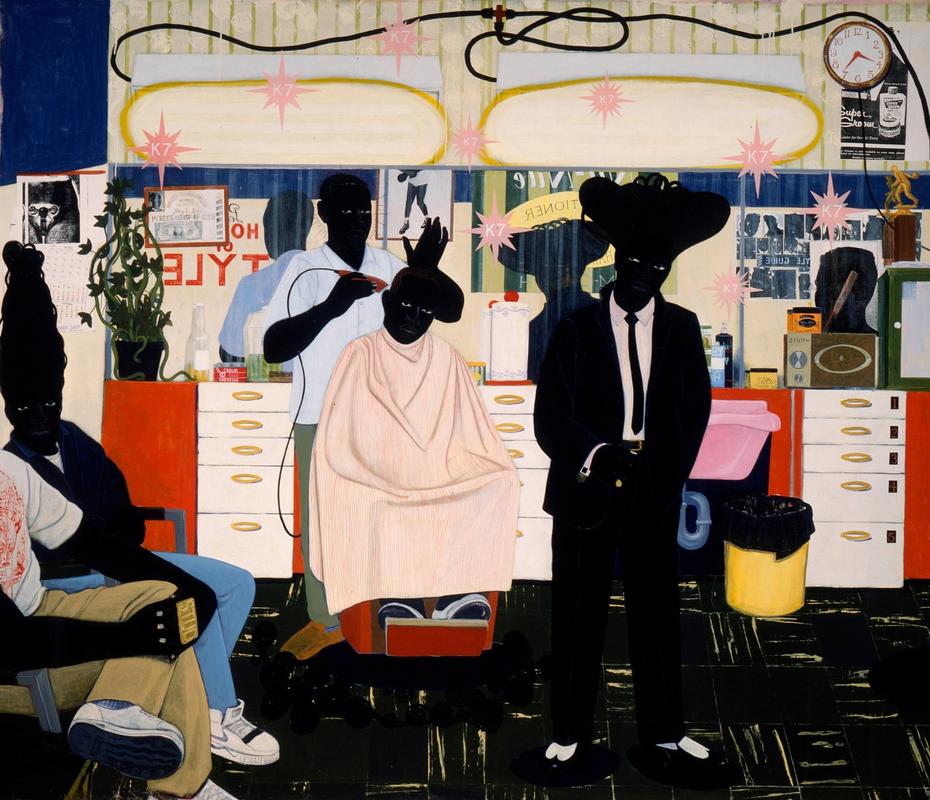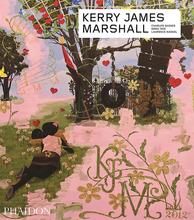More about De Style
- All
- Info
- Shop

Contributor
Kerry James Marshall’s De Style is all about normalizing Black culture.
For instance, the painting is humongous, sizing up at ten by eight and a half feet. This scene and the people within it, want to be seen. But while the size of this painting makes it hard to miss, it can be argued that the reason it’s so big is because it wants its audience to place themselves within the scene, forcing them to lock eyes with the individuals that look out at them. You simply can’t help but glance back and take everything in. It reaffirms you, challenges you, and inspires you all at once.
De Style also takes inspiration from different famous works of art in history. The first is even referenced in the name of the painting, which is an Americanized version of the Dutch movement De Stijl. The early 20th century art style was primarily focused on infusing spiritual purity into everyday life. Within the painting, Marshall references one of De Stijl’s most famous painters, Piet Mondrian. The red, blue, and yellow rectangular shapes are all a callback to Mondrian and his most famous works.
The second piece of art that De Style references within the four corners of its canvas is Hans Holbein’s portrait The Ambassadors. In both Holbein and Marshall’s paintings, the subjects within wear what could be considered fashionable clothing for the time and culture, while gazing out at the audience with assertive confidence.
What Marshall is saying by including references to these two very popular paintings and painters, is that his culture, Black culture, belongs in the same spaces as they do. It’s a reclamation of lost time by simply stating: What if we were allowed to exist within these spaces?
Once you’re drawn in by the aspects of familiarity, the painting then tells you: Now look what we have to offer. And then proceeds to show you things that aren’t inspired by famous dead white artists, but instead are a representation of unapologetic Blackness.
The scene itself takes place within a barber shop, which is widely known to be a place where Black culture and community thrive. But beyond that, the stark colors, extravagant hair, and decoration of the scene are all ways to present to its audience that this is a real Black moment. It’s not something imagined to get oohs and aahs from its onlookers. It’s real.
It may seem familiar to you, or it may be foreign. But either way, it’s authentic. And you’ll be a different person when you take your eyes off of this painting than you were when you first took a glance.
Sources
- Brehmer, Debra. “How Kerry James Marshall Rewrites Art History” Hyperallergic. July 12, 2016. https://hyperallergic.com/310477/how-kerry-james-marshall-rewrites-art-…
- Cotter, Holland. “Kerry James Marshall’s Paintings Show What It Means to Be Black in America” The New York Times. October 20, 2016. https://www.nytimes.com/2016/10/21/arts/design/kerry-james-marshalls-pa…
- Hurley, Clare. “American Painter Kerry James Marshall’s retrospective, Mastry” World Socialist Web Site. February 2, 2017 https://www.wsws.org/en/articles/2017/02/02/mars-f02.html












